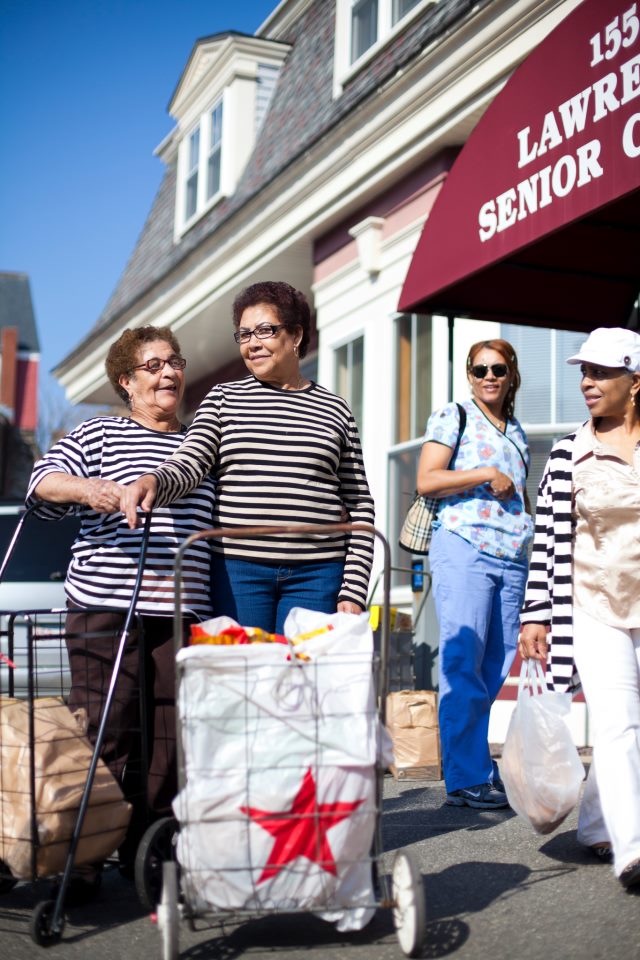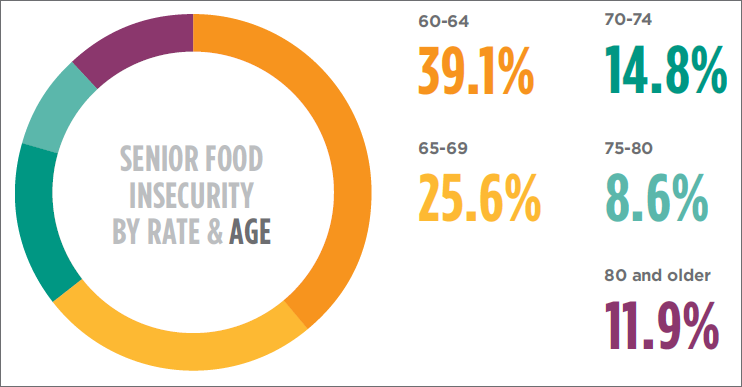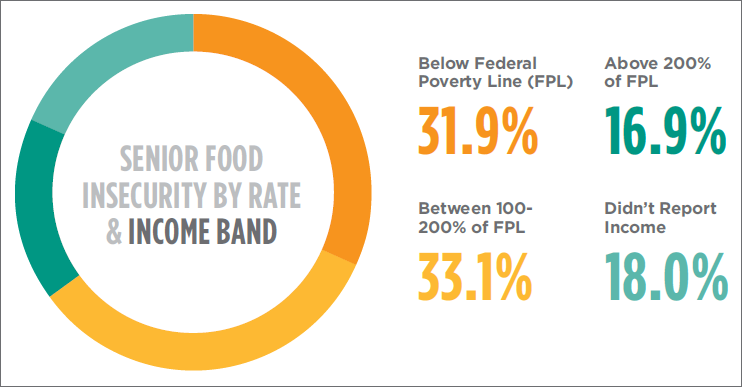
After a lifetime of work, many senior citizens live on fixed incomes that can force them to choose between paying for health care and buying groceries. Because they often need medication to maintain their health, many older Americans forgo the foods they also need to stay healthy.
Now, more than ever, it is imperative that we protect and strengthen nutrition programs to support healthy aging. New research released this week in partnership with the National Foundation to End Senior Hunger (NFESH) reveals the rate of hunger has increased to nearly one in every 12 seniors above the age of 60 in the United States. This represents a staggering 4.8 million seniors nationwide, more than double the number of food insecure seniors in America in 2001 and considerably more seniors than were expected to be hungry at this time.

Due to the onset and ongoing effects of the Great Recession, many seniors are entering retirement with less in savings than they intended. Older workers experienced longer than average periods of unemployment and now have less income to spend on necessities as a result of missing out on potential wages, prematurely tapping into social security, or finding themselves with reduced wages after regaining employment. The number of hungry seniors is projected to continue to increase significantly in the next 10 years as this group of older Americans begins to turn 65.

To prepare for the swell in demand, Feeding America is creating best practice models to expand and improve senior-focused outreach and the service programs of food banks and feeding agencies. Feeding America's senior hunger strategy has three main initiatives: build awareness about senior hunger as an issue, increase access to services for seniorsin need, and provide appropriate interventions to respond to the needs of seniors.
Seniors have a continuum of needs based on their mobility and ability to prepare meals. Different interventions are required to reach seniors throughout the continuum. Data from the National Health and Nutrition Examination Survey carried out by the Centers for Disease Control and Prevention indicate that approximately 79 percent of food insecure seniors are not homebound and can cook or access meals, while 13 percent are homebound and can cook, and the remaining 8 percent are homebound and cannot cook.
Because most food insecure seniors are not homebound, Feeding America's primary focus is on increasing food access for this population. Given the infrastructure of our nationwide network of food banks and partner agencies, we can have the greatest impact in addressing senior hunger by increasing access to nutrition services for seniors who are not homebound. To meet the needs of other seniors on the spectrum, Feeding America seeks to serve in a supportive or partnering role with other organizations that directly serve homebound seniors.
Surprising truth about younger seniors

Findings from Spotlight on Senior Hunger show the likelihood that a senior will experience food insecurity declines as they age. Every year for the last decade, younger seniors have experienced higher rates of food insecurity; in 2011, nearly 65 percent of food insecure seniors were below the age of 69. Given that an estimated 10,000 Baby Boomers will turn 65 every day for the next 17 years, service providers, policy makers, and families should be aware of the need among seniors in this age range.
Living above the poverty line does not mean exemption from hunger

While seniors who live below the poverty line experience higher rates of food insecurity than their peers with higher incomes, more than two-thirds of those reporting income live above the poverty line. Often seniors living above the poverty line do not have access to government assistance programs, such as the Supplemental Nutrition Assistance Program (SNAP), that help mitigate the risk of food insecurity.
More newly released Spotlight on Senior Hunger research findings are available on our website, including findings on the prevalence of food insecurity among seniors living in a household with a grandchild present, estimates of food insecurity among seniors by state, and levels of risk in the senior population by ethnicity.
Join the conversation
This May, Feeding America celebrates Older Americans Month by bringing attention to hunger issues faced by this rapidly growing population. Learn more about our efforts through our latest partnership with AARP in support of the Senior Grocery Program and Senior's and Hunger: A Caregiver's Concern, a poignant piece written by Feeding America Blogger Council member Dresden Shumaker.
The official Twitter hashtag for Older Americans Month is #oam2013; the official @FeedingAmerica campaign Twitter hashtag is #itsOURturn. Let us know what you think--are you as shocked by these numbers as I am?
As individuals, charities, businesses and government, we all have a role to play in getting more food to people in need. Together, we can solve hunger and ensure our parents and grandparents have enough to eat.
